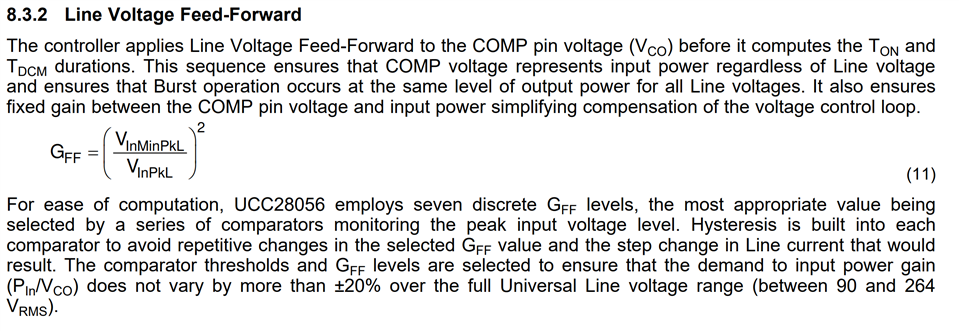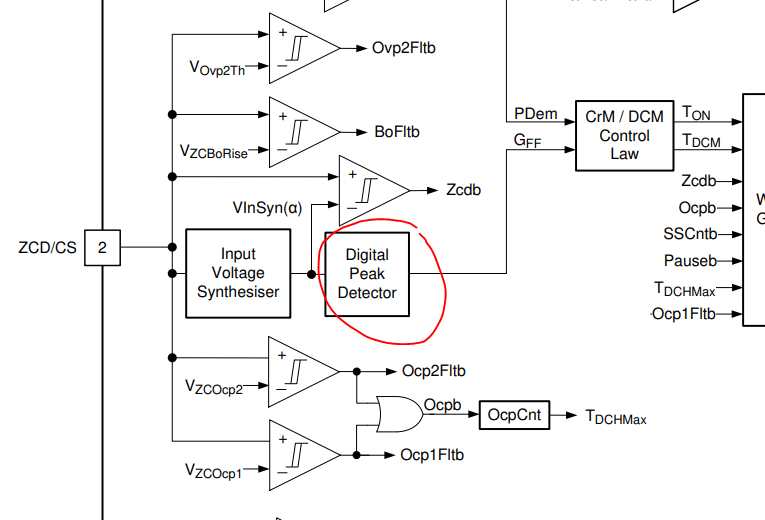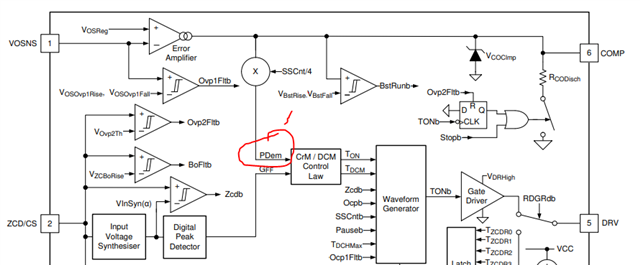Other Parts Discussed in Thread: UCC28064A
Hi team,
there's something I want to deep dive to further understand this IC behavior,
since the Vin is synthesized instead of being directly sensed by this IC,
1.I was wondering how does UCC28056 decide its very first duty cycle(or say on-time) before Vin(syn) being synthesized?
2.datasheet mentioned it use COMP to represent the input power regardless of the input voltage (ex.115 or 230)
would you elaborate on this too? I believe these two are connected?





